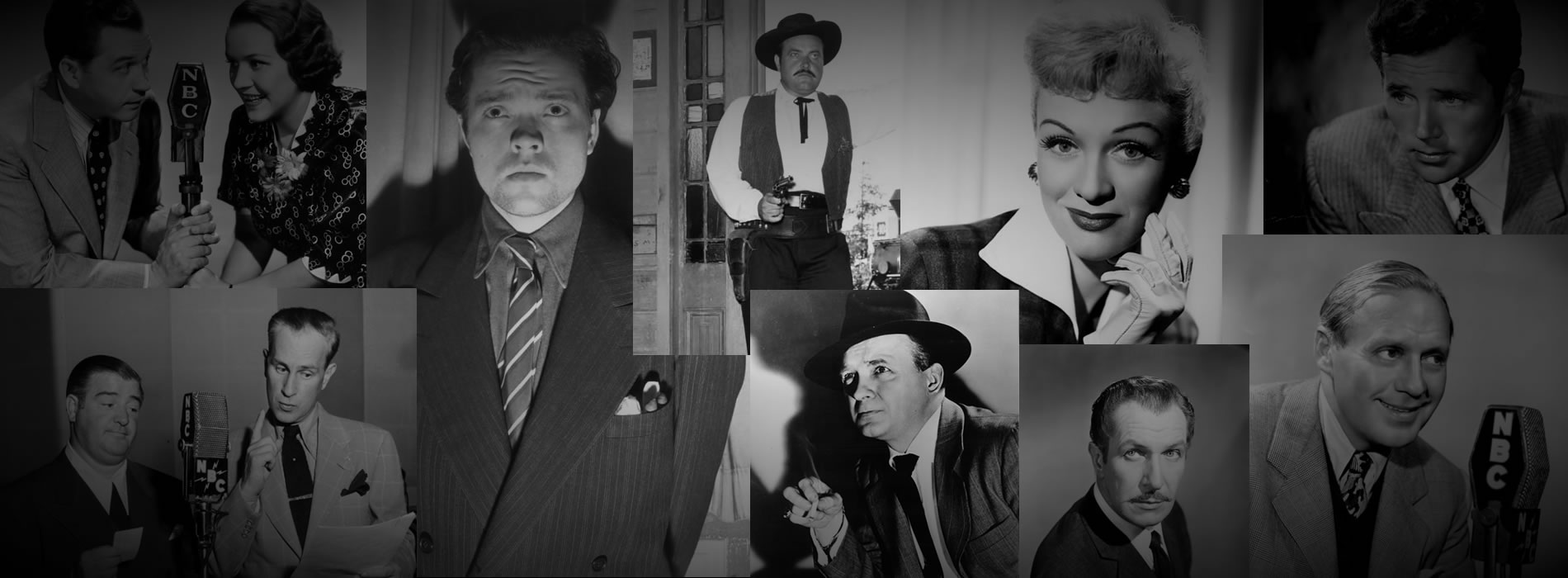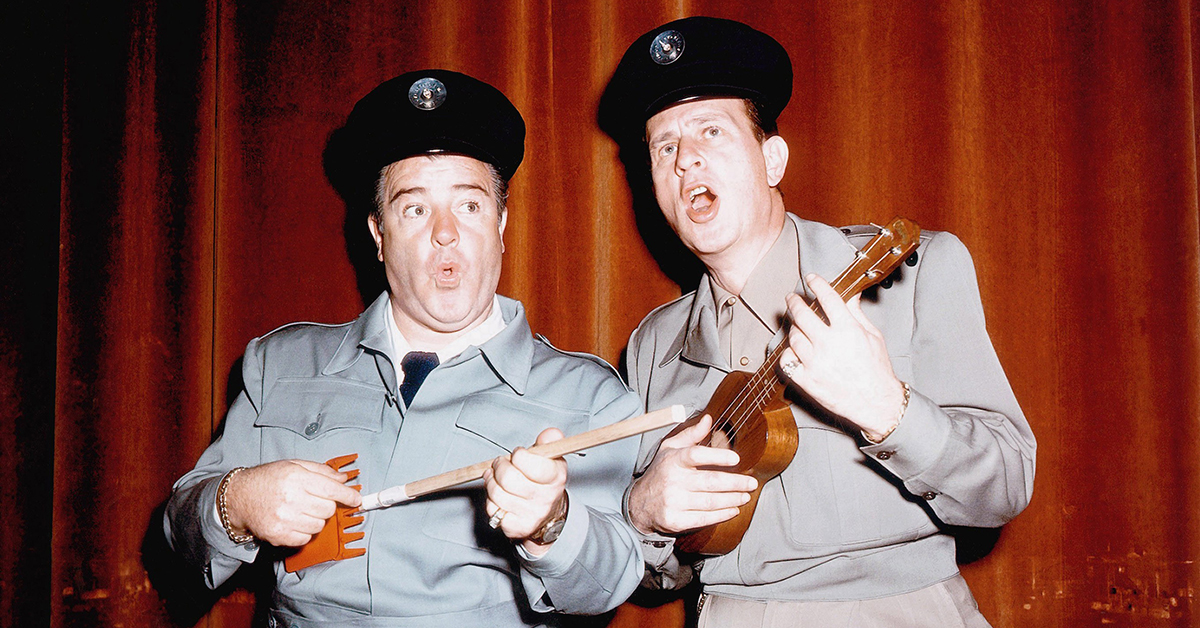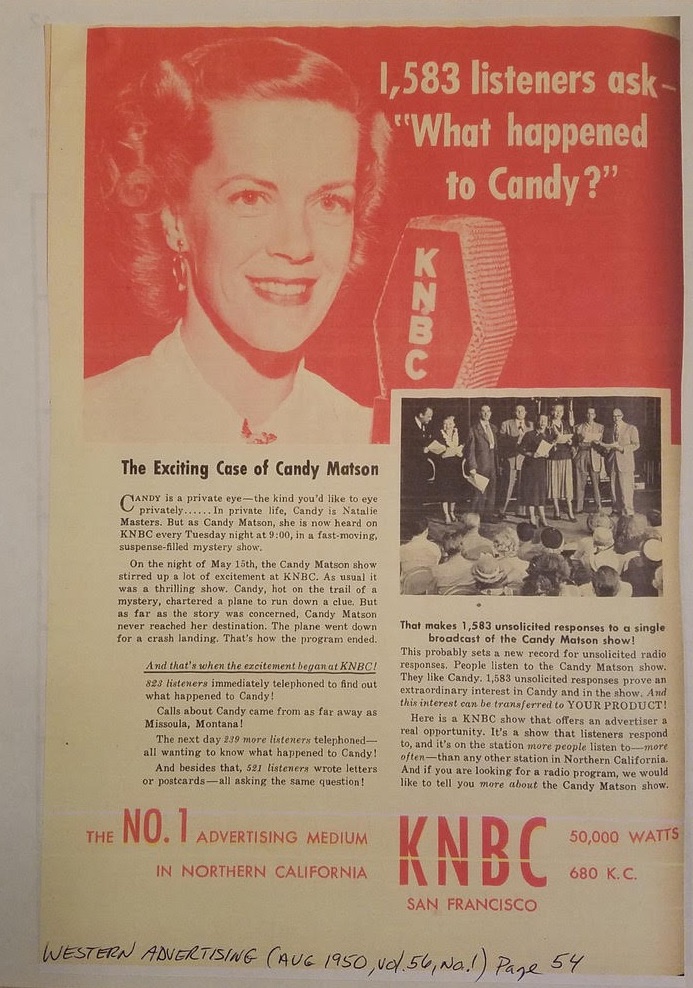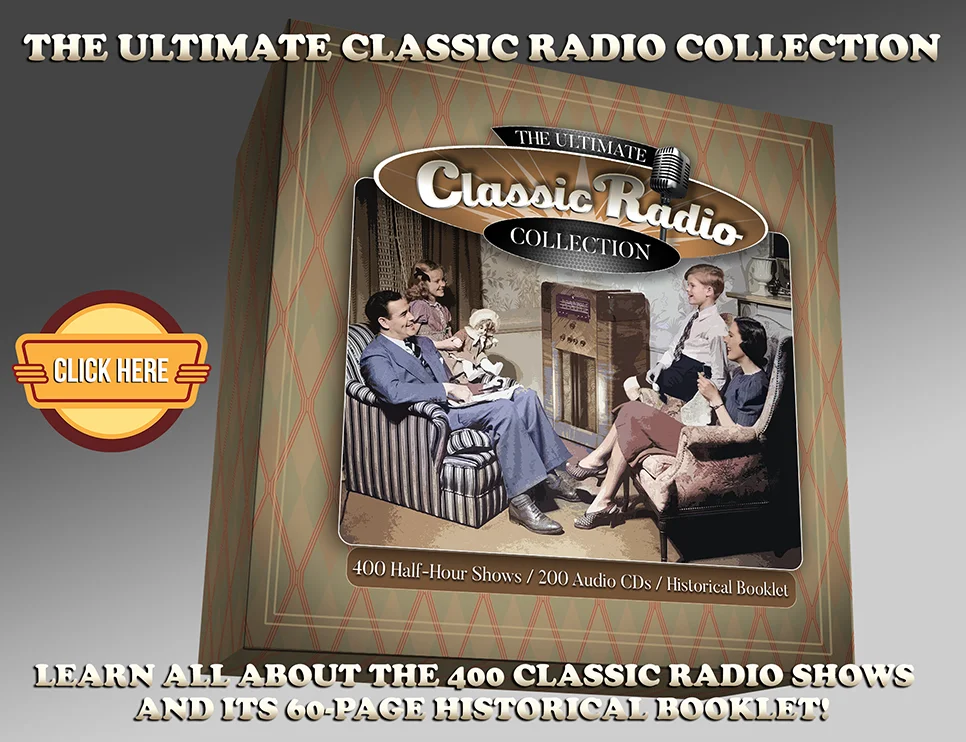
NEWSLETTER | VOL. 21, January 2023
Welcome to this month’s edition of The Hollywood 360 Newsletter, your place to get all the news on upcoming shows, schedule and interesting facts from your H360 team!
Carl’s Corner
by Carl Amari
Hello everyone and Happy New Year! Here’s the Hollywood 360 newsletter, January 2023 / Vol. 21. As someone on our mailing list, you’ll receive the most current newsletter via email on the first day of every month. If you don’t receive it by the end of the first day of the month, check your spam folder as they often end up there. If it is not in your regular email box or in your spam folder, contact me at carlpamari@gmail.com and I’ll forward you a copy. The monthly Hollywood 360 newsletter contains articles from my team and the full month’s detailed schedule of classic radio shows that we will be airing on Hollywood 360. Each month I’ll provide an article on one of the classic radio shows we’ll present on Hollywood 360. This month, we’re airing an episode of The Abbott & Costello Show the week of January 21st, and their special guest is Lucille Ball so don’t miss it! Here’s an article on Bud and Lou and their long-running comedy series. Enjoy!
ABBOTT AND COSTELLO
By Carl Amari and Martin Grams
When Universal Studios informed comedians Bud Abbott and Lou Costello that their next venture would involved a team-up with Dracula, The Wolf Man and Frankenstein’s Monster, Lou Costello was against the proposal. “No way I’ll do it,” Costello told the head of the motion-picture studio. “My little girl could write something better than this.” It took a $50,000 advance in salary and the signing of Costello’s good friend Charles Barton directing the picture, to convince the comedian to go along with the idea. Abbott and Costello Meet Frankenstein became the highest grossing movie of their career and Lou Costello later recalled, “they were right, I was wrong.” Sequels involving The Mummy and The Invisible Man followed soon after.
Today, fans of Abbott and Costello appreciate the numerous motion-pictures available commercially on DVD, including the boys’ first film, One Night in the Tropics (1940). Their second film, Buck Privates (1941), grossed an estimated $10 million – not bad when you consider the budget was $180,000.
The due started in Vaudeville and by the fall of 1942, the boys had their own weekly radio program and topped the popularity polls of Radio Daily and Radio Guide. Their popular “Who’s On First?” routine made them a national sensation. In March of 1943, Costello was struck down with rheumatic fever. Bud Abbott refused to perform without his partner, so the duo was temporarily replaced by Jimmy Durante and Garry Moore. Then, on the afternoon of November 4, 1943, during rehearsals for the evening’s broadcast, Costello received a call from home – his son, Lou, Junior, accidentally drowned in the family swimming pool. The comedian rushed home to discover the news was accurate as reported.
Word spread through Hollywood and numerous radio comedians volunteered to fill in for Costello that evening. Bob Hope, Jimmy Durante and Red Skelton. To the surprise of everyone in the studio, Lou Costello returned moments before airtime and went before the microphone to deliver his lines as scripted and rehearsed earlier in the day. Guest Lana Turner found it difficult to deliver her lines on the air while Lou Costello pushed back the tears… momentarily. Towards the end of the broadcast, Lou broke down and Bud Abbott explained to the stunned radio audience the horrible news.
The Bud Abbott and Lou Costello Show ran for seven years until the summer of 1949. By then filming was completed for Abbott and Costello Meet the Killer, Boris Karloff, and Lou Costello was bedridden for several months due to a relapse of rheumatic fever – a health ailment he battled back in 1943. His illness prevented ABC from renewing the contract for an additional season on radio.
Soon after Bud Abbott and Lou Costello went to Mars and faced off against Dr. Jekyll and Mr. Hyde, the boys ventured into the television business. Produced by Costello’s wife, Patricia, the television series lasted two seasons and gave the boys an opportunity to reprise the best comedic sketches and scenarios from their radio scripts. The next time you watch one of their television programs, or watch one of their big screen movies, remember that flat sarcasm of Bud Abbott and shrieks from Lou Costello originated on radio – the perfect medium for verbal standup that is often imitated today at fan gatherings… sans the Frankenstein monster.
LEND ME YOUR EARS | THIS MONTH’S SONG: Leather and Lace, Stevie Nicks and Don Henley
RELEASED: October, 1981
by Lisa Wolf
Click here to watch on YouTube.
 “I wrote this song because Waylon Jennings called me up and asked me to write a song called ‘Leather and Lace.’ It was to be a duet for him and his wife (Jessi Colter), and I worked very hard trying to explain what it was like to be in love with someone in the same business, and how to approach dealing with each other… And then I found out that Waylon and Jessi were breaking up, and Waylon wanted to just sing it by himself. After all the work I had put into the philosophy of two people dealing with this problem, I told Waylon that only 4 people in this world could sing this song: he and his wife, or myself and Don Henley… it became one of the most special love songs that I would ever write… and remains that, even today, after all these years.” ~ Stevie Nicks
“I wrote this song because Waylon Jennings called me up and asked me to write a song called ‘Leather and Lace.’ It was to be a duet for him and his wife (Jessi Colter), and I worked very hard trying to explain what it was like to be in love with someone in the same business, and how to approach dealing with each other… And then I found out that Waylon and Jessi were breaking up, and Waylon wanted to just sing it by himself. After all the work I had put into the philosophy of two people dealing with this problem, I told Waylon that only 4 people in this world could sing this song: he and his wife, or myself and Don Henley… it became one of the most special love songs that I would ever write… and remains that, even today, after all these years.” ~ Stevie Nicks
“Leather and Lace” is Track 8 on Bella Donna, Stevie Nicks’ first solo album. In “Leather and Lace,” Stevie Nicks talks about a couple trying to have a long-distance relationship. For Nicks, it was really about constantly saying goodbye to the man in her life as she goes on the road. This was Henley’s first hit away from the Eagles and one of Nicks’ first hits away from Fleetwood Mac. They both had very successful solo careers. Don Henley performed this with Nicks when she was inducted into the Rock and Roll Hall of Fame as a solo artist in 2019. She was the first woman to enter the Hall as both a solo artist and with a group (Fleetwood Mac).
Bella Donna, which spent nearly three years on the Billboard 200 between 1981 and 1984, is Nicks’ best-selling album to date, still highly revered to this day.
Following a national tour in support of the album, Nicks later released a live performance of ‘Leather And Lace’. She decided to use the solo version and did not feature Don Henley.
 Jean Carroll: Stand-up Comedy Pioneer
Jean Carroll: Stand-up Comedy Pioneer
by Barry Richert
She smiles confidently as she takes the stage. Dressed to the nines—an elegant gown; long, white gloves; a string of pearls at her throat—her appearance befits the ideal 1950s woman. She begins to sing…then, suddenly waving her arms to silence the orchestra, she launches into a rapid-fire monologue about everything from past boyfriends to her spouse:
“(My husband) doesn’t drink ‘cuz he likes it, he drinks to steady his nerves. The other night they got so steady he couldn’t move at all. And let me tell you, he had a little accident: he was going from a nightclub to his car and somebody stepped on his hand!” 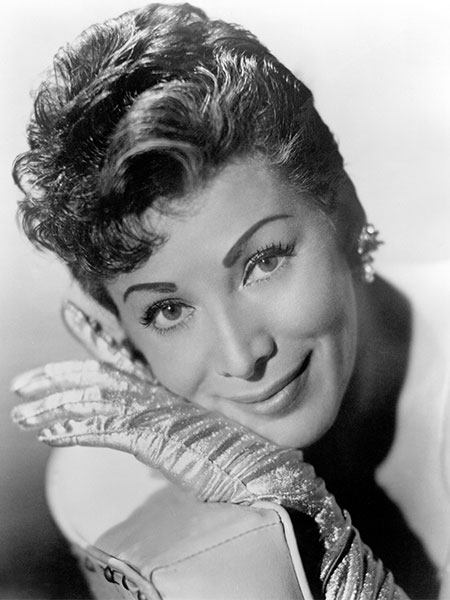
Her rat-a-tat delivery mingles sarcasm with a knowing wink and extreme candor. How could a woman this refined…this beautiful…be funny? Especially in the 1950s? That was the enigma known as Jean Carroll. With the benefit of hindsight, it’s clear that her act was very much a reflection of her entire career: set up the audience’s expectations, then suddenly subvert them.
Jean Carroll started doing comedy in the 1940s and is credited as the first female Jewish stand-up comedian. While not a household name, she had a long, successful show business career that included night clubs, theaters, television variety shows, and even her own situation comedy. She is often cited as the inspiration behind the title character in the TV series The Marvelous Mrs. Maisel. Indeed, lead actress Rachel Brosnahan’s monologues as Midge Maisel have a decidedly Jean Carroll-like, quick-fire pace.
Born Sadie Zeigman, she began her career in vaudeville as a dancer and by the age of 12 had earned enough money to support her family of five. She spent her teen years on the Variety circuit, a chain of theaters that presented musical comedy acts for family audiences. Eventually, Carroll became the female member of a number of dual acts comprised of a man and woman performing comic repartee in between song and dance routines. Carroll was half of the successful act billed as “Marty May, Friend of Thousands, Annoyed by Jean Carroll,” when she did something unprecedented: she demanded pay equal to her partner, Marty May. May refused, so Carroll struck out on her own.
While performing in the early 1930s, Carroll met dancer Buddy Howe. They decided to team up and do a comedy act. Unlike Carroll’s experience with Marty May, Howe turned out to be a generous partner willing to give Carroll the spotlight. In the book In On the Joke, The Original Queens of Stand-Up Comedy by Shawn Levy, Howe remembers being impressed with his new partner’s talents: “Jean could dance, sing, and do a little of everything. But she was essentially a comedienne…I was lucky enough to find a girl who could write material that was so distinctive that they had to play us…I was strictly a straight man.”
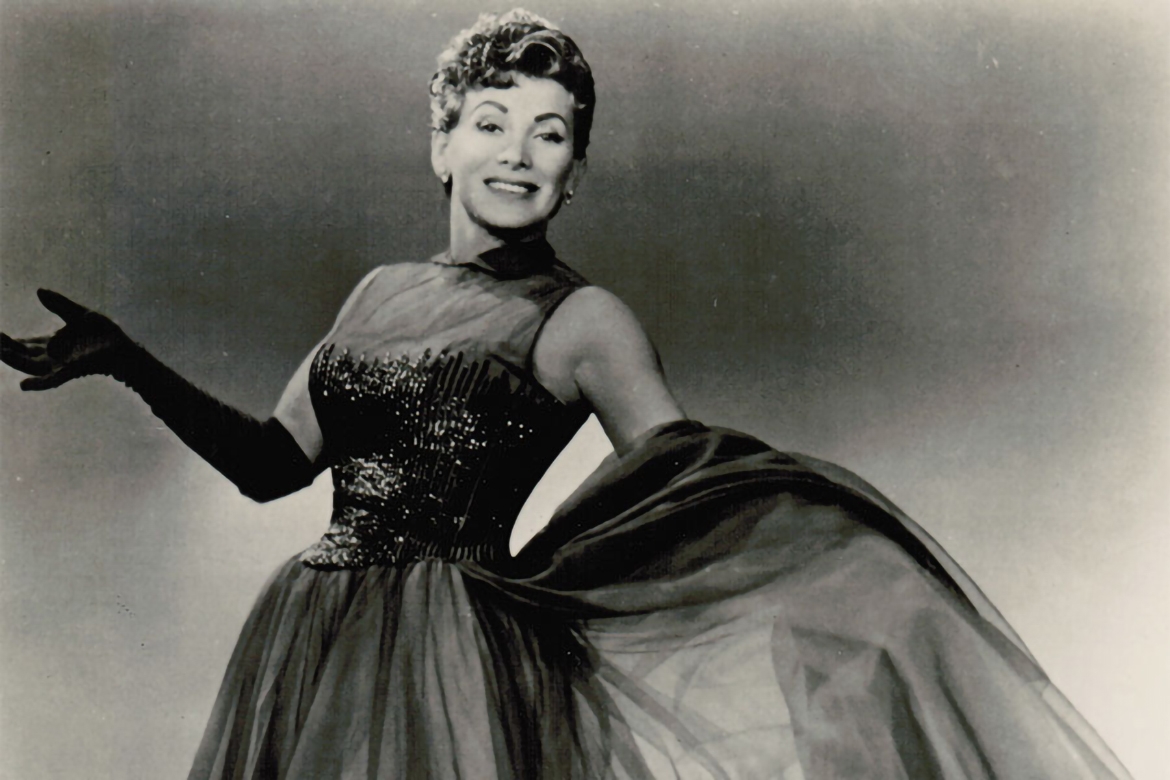 Billed, crucially, as “Carroll and Howe,” the duo was a success, touring across the US and England, including many performances with the USO. In 1943 Howe was drafted but urged Carroll to continue the act solo. Carroll decided to make comedy the focal point. She had a successful run that entertained audiences and critics alike, with Billboard magazine noting, “Jean Carroll is a bit unusual, as she is a top-flight comic in a field almost monopolized by males. Gal delivers some meaty material for bistro patrons.”
Billed, crucially, as “Carroll and Howe,” the duo was a success, touring across the US and England, including many performances with the USO. In 1943 Howe was drafted but urged Carroll to continue the act solo. Carroll decided to make comedy the focal point. She had a successful run that entertained audiences and critics alike, with Billboard magazine noting, “Jean Carroll is a bit unusual, as she is a top-flight comic in a field almost monopolized by males. Gal delivers some meaty material for bistro patrons.”
After Howe returned home from service, he could see how successful Carroll had become and encouraged her to continue working solo. “Jean was already doing a single,” he said, “and doing so well it seemed foolish to do a double again. Show business had changed a lot, and I was a little older, and, to be very honest about it, she was too good.” Howe became a talent agent with General Amusements Corporation (GAC) in Chicago and would never perform again. He did, however, rise to prominence within the agency and represented Carroll for the rest of her career.
In 1944, Jean gave birth to a daughter. As both a mother and a female comedian in a field dominated by men, Carroll realized she had an uphill climb: “Unlike a male comic, who needs only to be funny to get laughs, a comedienne has two obstacles to overcome. In addition to good material, she has to knock down the ‘wall of resistance’ built up in the minds of men that ‘women aren’t funny’ and, more important, that women ‘shouldn’t be funny.’”
By the late 1940s, as the performance setting for stand-up comics transitioned from nightclubs to television, Carroll was invited to appear on Toast of the Town. She became a fixture on the popular variety program, making some twenty more appearances through the 1960s, by which time it was the Sunday night staple known as The Ed Sullivan Show. The program became a showcase for her caustic wit on subjects like dating…
“He took me to a nightclub…and, you know, you’ve seen those mambo fanatics, but this guy: mambo mambo mambo every dance. Everybody got off the floor to watch because the band was playing a waltz!”
…old boyfriends…
“This guy ate like he was going to the chair. I mean as per manners, you know? I’ve seen people eat with their hands before, but not soup.”
…and marriage…
“The thing that attracted me to my husband was his pride. I’ll never forget the first time I saw him, standing on a hill, his hair blowing in the breeze—and he too proud to run and get it!”
Carroll was a familiar face on other popular shows as well, including Texaco Star Theatre, Cavalcade of Stars, and Perry Como’s Chesterfield Supper Club.
In November of 1953 Carroll became the star of her own TV show, an ABC situation comedy called Take It from Me, about a cheeky suburban housewife, her perpetually preoccupied spouse, and their trendy daughter. The show was unique in that Carroll would often break the fourth wall by talking to the audience and providing wry commentary. Think Fleabag with a 50s sensibility. Carroll’s performance was well-received, but the show’s writing was critically panned. Before the show could be cancelled, Carroll quit. “I’ll never, never undertake a live weekly series again,” she said at the time. “I’m not interested in working that hard. The line of least resistance is what I’m looking for.” It was the first clue that Jean Carroll was starting to sour on show business.
In 1960, Carroll released an album called Girl in a Hot Steam Bath. Response to the LP was lukewarm and that same year Carroll returned to the UK to appear at the Palladium and perform on various television variety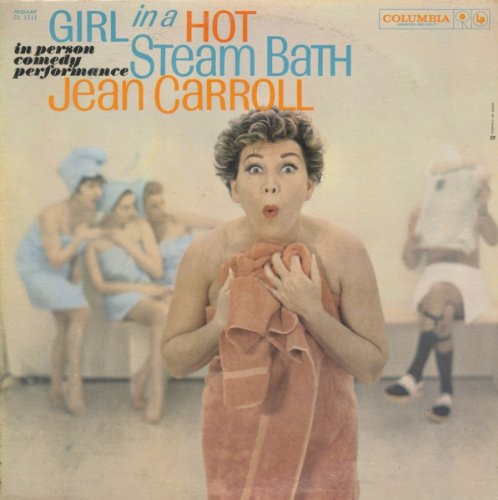 shows. She was so well received that she was offered her own sitcom at a fee of 50,000 pounds. After some hesitation, she turned it down. In explaining her decision to the press, Carroll made no bones about what took priority in her life: “I’m too much in love with my family to keep going away from home. My husband and 16-year-old daughter are dead-heat for first place, and I just don’t want to travel around anymore. The only dates I want are those on home ground—and not more than a mile away from where I live. Yes, I still love show business, but I love my family more.”
shows. She was so well received that she was offered her own sitcom at a fee of 50,000 pounds. After some hesitation, she turned it down. In explaining her decision to the press, Carroll made no bones about what took priority in her life: “I’m too much in love with my family to keep going away from home. My husband and 16-year-old daughter are dead-heat for first place, and I just don’t want to travel around anymore. The only dates I want are those on home ground—and not more than a mile away from where I live. Yes, I still love show business, but I love my family more.”
Gradually, Carroll cut back on the night club gigs and television appearances. Money wasn’t a problem. She had made, as she put it, “pots of money,” and in 1966 her husband Buddy had become president and chairman of the board of GAC (which would eventually become the famed International Creative Management). Carroll had simply lost interest in performing. “In clubs, I could name my own price. But I just didn’t care for the business. I had stopped laughing at my own jokes.” Then, in 1969, she had a coronary episode. The day she walked out of the hospital was the same day she walked away from her show business career.
Carroll spent her retirement doting on her grandchildren, nieces, and nephews. Still the breadwinner as she had been at 12, she made certain her family always had enough money. Buddy died in 1981, but Carroll would live another 29 years, passing away at the age of 98. The New York Times noted that Carroll had “…blazed the trail for legions of female stand-up comics who came after her.”
In speculating why Jean Carroll never became a household name, some industry observers have suggested that it’s because she didn’t present a fictitious persona on stage. It was all her up there, an unusual approach to comedy for a woman at the time. Others have reasoned that audiences weren’t ready for her—wasn’t a woman who stood in front of a microphone just supposed to sing? But trailblazers usually do the unexpected, and subverting expectations was Carroll’s stock-in-trade. She carved a path for younger comediennes to follow, and performers such as Rita Rudner, Joy Behar, and Lily Tomlin have acknowledged the effect Carroll had on them.
Trailblazers are also usually unaware of their influence. While being honored at the Friars Club in 2006, Carroll admitted, “I had no idea that I was so good! You think I’m joking. I’m not joking. I had no idea that I would make the impact I obviously made.”

The “Lost Lone Ranger Christmas Special”
by Martin Grams
On the evening of December 26, 1938, the radio cast at station WXYZ played roles in not one, but two episodes off The Lone Ranger. Although the program premiered in 1933, it was not until February of 1938 that the radio program was recorded on a regular basis. For the holiday offering of 1938, it was decided not to record the episode because the series was then being syndicated across the country and it would have been weird to hear a Christmas episode in April, July or September. So the logical solution was to dramatize two different episodes on that evening. One as a traditional holiday adventure and the other as a normal western.
For the West Coast broadcast and for the transcription, the script used for the broadcast of September 9, 1937. In that episode, Missouri Mike and his friend Steve Sanders ar e among the shrewdest outlaws The Lone Ranger and Tonto ever tried to track down. Wanted for murder, robbery and rustling, the only clue to their identity is a tattoo on the right forearm. The Lone Ranger and Tonto ride out to the ranch of Widow Spragg, 15 miles from Parkersville, unaware that the men they are trying to track down are trailing from behind. Hours after the masked man and Indian leave the ranch of Sam Spragg and his mother, the thieves break into the house and commit another robbery. Days later, finding no sign of Missouri Mike, The Lone Ranger and Tonto leave to hunt the outlaw in the open plains. Outside town, an Indian named White Fox participates in a race with Sam, with prize money for the winner, and then exchange death blows over money that was stolen by Missouri Mike who never left town. In desperation, The Lone Ranger talked with men from Parkersville, and the tribe of White Fox, to outline a plan for locating the outlaws. With Indians as expert trackers and vengeance in their hearts, The Lone Ranger has the advantage and together they hunt under the guide of moonlight. Finding the outlaws’ camp, they take Missouri Mike’s shirt off to verify the tattoo.
e among the shrewdest outlaws The Lone Ranger and Tonto ever tried to track down. Wanted for murder, robbery and rustling, the only clue to their identity is a tattoo on the right forearm. The Lone Ranger and Tonto ride out to the ranch of Widow Spragg, 15 miles from Parkersville, unaware that the men they are trying to track down are trailing from behind. Hours after the masked man and Indian leave the ranch of Sam Spragg and his mother, the thieves break into the house and commit another robbery. Days later, finding no sign of Missouri Mike, The Lone Ranger and Tonto leave to hunt the outlaw in the open plains. Outside town, an Indian named White Fox participates in a race with Sam, with prize money for the winner, and then exchange death blows over money that was stolen by Missouri Mike who never left town. In desperation, The Lone Ranger talked with men from Parkersville, and the tribe of White Fox, to outline a plan for locating the outlaws. With Indians as expert trackers and vengeance in their hearts, The Lone Ranger has the advantage and together they hunt under the guide of moonlight. Finding the outlaws’ camp, they take Missouri Mike’s shirt off to verify the tattoo.
For the East Coast and Mutual Broadcast System, a holiday adventure was dramatized. In that episode, poverty was common in the town where Bob Hamill lived, and little could be done about it, while Eric Flint thrived. The latter was rich, owned practically all of the town, and was hated and despised. When he learns a masked man is looking for him, he hires two bodyguards, Butch and Cooper, but a desperate clerk named Bob Hammil decides to rob him to buy Christmas presents for his son. Bob is going to lose his homestead to Flint, unable to pay the mortgage, so he figured what harm would it be to give his son a holiday to remember? Catching the outlaws in play for The Lone Ranger, Bob draws his gun and forces the men – including Eric Flint – into an old shack, tied and bound. The Lone Ranger, meanwhile, learns from Tonto about Eric Flint. There was a log of men here in the West who came to escape unhappiness in the East, the masked man rationalizes. Flint was one of them but his faith in his fellow-men was destroyed before he came here, did something to him. He lost his sense of values, his sense of fair play. The Lone Ranger breaks in to kidnap Flint, leaving Bob with the two gunmen. Throughout Christmas Eve, The Lone Ranger forced Flint to call on a few of his customers, people he loaned money to, and people who will not be able to pay off their debts. The first person they call on is Dan Dickerman.
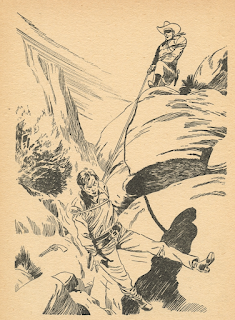 RANGER: He’s not going to take your house. Those papers he signed with you were illegal. I want you to sign this paper telling just what sort of an agreement he made with you.
RANGER: He’s not going to take your house. Those papers he signed with you were illegal. I want you to sign this paper telling just what sort of an agreement he made with you.
JANE: Illegal?
RANGER: Then I want you to come with me to the sheriff’s office and lodge a complaint against him. He’s on his way to jail.
FLINT: No, no! Yuh can’t put me in jail. Them papers is legal!
RANGER: You be quiet! How about it, Dan?
DAN: But we can’t do it now…
RANGER: There’s no time like the present. The sooner he gets to jail, the better the community will be. We may have a long ride to the county seat in this kind of weather, and I’ve got to get him there before the first of the year if I’m going to save your property. All I need is one complaint against him.
DAN: Well, can’t you get somebody else?
RANGER: What for? He made an agreement with you, didn’t he?
DAN: But… well, I don’t know. Look, stranger, it’s Christmas Eve. I can’t send a man tuh jail on Christmas Eve.
RANGER: Not even Eric Flint?
JANE: He oughta be in jail… if he’s dishonest, Dan…
RANGER: It might save your house. Don’t you realize that?
DAN: I won’t do it. That’s all. Taint the spirit of the day. You get somebody else to send him to jail. If it was day after tomorrow or next day, any other day but Christmas…
RANGER: We’ll find someone else. Come on, Flint.
The Lone Ranger took Flint to another house, and then another, and each place Flint noted with increasing amazement, that the spirit of Christmas, the thought of peace on earth, and good will, so imbued the men, that not one could be found who would agree to assume the responsibility for jailing a man on Christmas day.
Eric’s backstory was not so cheerful. Eric Flint came out to the West 20 years ago, intending to send word to his wife when she could come out and join him after he got a foothold. He sent that word and waited, but she never answered his letter. When next he heard, he read her name in a paper ten years later, saying that she was on the stage. It soured him. He was mad. Mighty mad, to think she wouldn’t join him after all the promises he made. But he did not know his letter never was delivered. He did not know she waited years to hear from him. She did not know where to reach him. The Lone Ranger found the letter Eric Flint wrote. It never was delivered. He found it with a pack of other mail that had fallen into the hands of Indians when a stagecoach was wrecked. Then The Lone Ranger located her. She finally came out West in an effort to try and find him. She was singing on the stage to get the money for the trip. She was singing on the stage to get the money for the trip. She hunted years and finally settled down. The Lone Ranger knew of this and was determined to show Eric Flint that there were things far better than cheating customers out of their land.
As the night wore on, Mary Hammil sat by the window where a small candle gleamed out into the night. She couldn’t sleep. She worried, worried about her husband, worried where he went, and remembering the expression of grim determination on his face when he left, was fearful of what might happen before he came back. But when Bob returned, he had a smile on his face. He told his wife all about Eric Flint being taken away and justice served against the vile banker.
The next day, early Christmas morning, Eric Flint arrives at the Hammil homestead to surprise young Donny, Bob and Mary’s little boy, with a Christmas tree. Over the night, while everyone was sleeping, Butch and Cooper cut down Christmas trees and followed orders from Flint to deliver them to everyone’s house. Mary was shocked to discover the old Scrooge has a change of heart. He plans to visit everyone in town and deliver them a generous Christmas morning. Then he has to leave town. Mary asks for how long.
FLINT: How long? Sakes alive, I don’t know. I’m goin’ to meet my wife. I ain’t seen her in 20 years. She’s still waitin’ for me. I won’t be back next month. Mebbe not until spring. Mebbe I won’t come back! And who cares? A merry Christmas everybody!
Notes
While the Christmas adventure was never recorded, it should be noted that this script would later be recycled for the episode titled “The Christmas Tree,” broadcast of Christmas 25, 1950, with slight revisions. (For the 1938 rendition, the element involving Donny wanting a Christmas tree and the delivery of a huge tree on Christmas morning was borrowed from the broadcast of December 24, 1934.)

WAS THIS AN EFFECTIVE ADVERTISMENT?
by Karl Schadow
You are an executive of an ad agency or sponsor seeking a suitable radio program in 1950. Would the ad below catch your attention and make you want to look into this series? Had you ever heard of this program? Candy Matson YU 2-8209 was the best female private eye series on radio.
Send your replies to the author khschadow@gmail.com Your comments will be collated and presented in a future issue of the Hollywood 360 Newsletter.
Hollywood 360 Schedule
1/7/23
The Adv. of Philip Marlowe 3/21/50 The Deep Shadow
Fibber McGee & Molly 12/2/41 Fibber Grows a Mustache
Suspense 11/23/43 The Strange Death of Charles Umberstein
Mr. Chameleon 10/6/48 The May and December Murder Case
This Is Your FBI 2/1/46 The Sinister Souvenir
1/14/23
Night Beat 3/13/5 Am I My Brother’s Keeper
The Whistler 2/11/48 Money Is the Root of All Evil
The Jack Benny Program 4/24/49 Trading in His Maxwell
Casey, Crime Photographer 7/31/47 Bright New Star
The Screen Director’s Playhouse 4/28/50 Rope of Sand
1/21/23
Nick Carter, Maser Detective 8/22/48 The Case of the Red Arrow
The Abbott & Costello Show 11/18/43 w/ guest, Lucille Ball
The Six-Shooter 9/27/53 The Coward
Dangerous Assignment 7/9/49 Relief Supplies
The Weird Circle 7/15/43 The House and the Brain
1/28/23
X Minus One 7/10/56 Bad Medicine
The Shadow 4/17/38 The Blind Beggar Dies
The Phil Harris & Alice Faye Show 10/2/49 Frankie Borrows Phil’s New Car
Gunsmoke 10/8/55 Good Girl, Bad Company
The Adv. of Sherlock Holmes 5/7/45 The Purloined Ruby
© 2022 Hollywood 360 Newsletter. The articles in the Hollywood 360 Newsletter are copyrighted and held by their respective authors.

